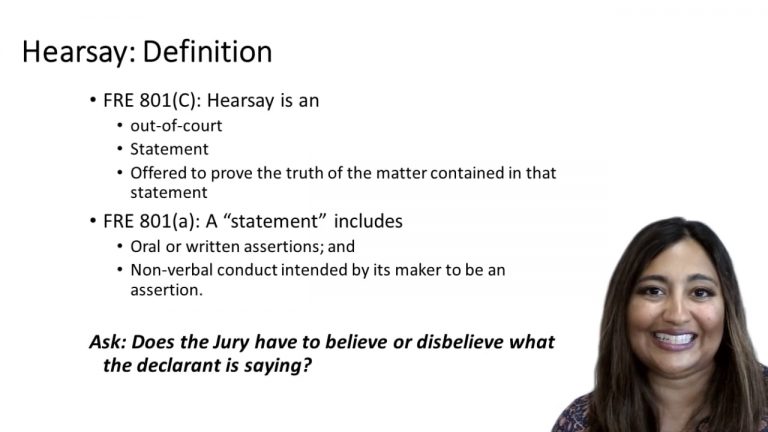SmartBrief
Confirm favorite deletion?
Evidence Keyed to Sklansky
Subramaniam v. Public Prosecutor
Citation:
1 W.L.R. 965 (Privy Council 1956)Facts
The defendant was found guilty of possession of 20 rounds of ammunition. The defendant was found in a wounded condition by government security forces. When he was searched there was found around his waist a leather belt with three pouches containing 20 live rounds of ammunition; no weapon of any description was found upon him or in the immediate vicinity. The defendant argued that he had been captured by terrorists, that at all material times he was acting under duress, and that at the time of his capture he had formed the intent to surrender. The defendant attempted to introduce testimony of conversations that he had with the terrorists. The trial court excluded the evidence saying it was impermissible hearsay.
Only StudyBuddy Pro offers the complete Case Brief Anatomy*
Access the most important case brief elements for optimal case understanding.
*Case Brief Anatomy includes: Brief Prologue, Complete Case Brief, Brief Epilogue
- The Brief Prologue provides necessary case brief introductory information and includes:
Topic:
Identifies the topic of law and where this case fits within your course outline.Parties:
Identifies the cast of characters involved in the case.Procedural Posture & History:
Shares the case history with how lower courts have ruled on the matter.Case Key Terms, Acts, Doctrines, etc.:
A case specific Legal Term Dictionary.Case Doctrines, Acts, Statutes, Amendments and Treatises:
Identifies and Defines Legal Authority used in this case.
- The Case Brief is the complete case summarized and authored in the traditional Law School I.R.A.C. format. The Pro case brief includes:
Brief Facts:
A Synopsis of the Facts of the case.Rule of Law:
Identifies the Legal Principle the Court used in deciding the case.Facts:
What are the factual circumstances that gave rise to the civil or criminal case? What is the relationship of the Parties that are involved in the case.Issue(s):
Lists the Questions of Law that are raised by the Facts of the case.Holding:
Shares the Court's answer to the legal questions raised in the issue.Concurring / Dissenting Opinions:
Includes valuable concurring or dissenting opinions and their key points.Reasoning and Analysis:
Identifies the chain of argument(s) which led the judges to rule as they did.
- The Brief Prologue closes the case brief with important forward-looking discussion and includes:
Policy:
Identifies the Policy if any that has been established by the case.Court Direction:
Shares where the Court went from here for this case.
Topic Resources
Topic Outline
Topic Refresher Course
Topic Charts & Notes 

 12m 52s
12m 52s